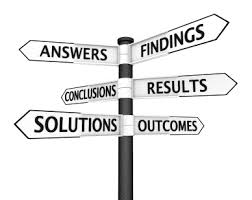Regardless how we sell, our customers are trying to achieve one thing when they buy. They are trying to achieve some very specific outcomes.
Those outcomes may be all over the place—solve a problem, address an opportunity, enable other things to happen. In the case of selling embedded products, it may be to help customer achieve the goals they seek with the development of their new product. It may be to help our customer help their customers achieve certain outcomes.
Just as the specific outcomes customers try to achieve will vary, how they measure their success in achieving those outcomes will vary. It may be financial—cost reduction , revenue enhancement, profit enhancement. It may be measured in therms of market positioning, share, growth, customer retention (all of which probably have financial impacts). It may be more personal, reducing hassle factor, simplification, reducing overwhelm, or other things (again many of these have financial impacts, but sometimes less direct).
Buying is not an outcome, it’s part of a process to achieve an outcome.
Buying, by itself seldom produces an outcome, but is part of a larger effort the customer or problem the customer wants to address to produce an outcome. For example, if I buy a CRM system, that action does not produce the benefits and value I expect from the implementation of a CRM system. There’s a whole lot involved in integrating it into our business processes, managing the change to get people to use it, and so forth.
People don’t buy just for the sake of buying. Even procurement.
Sellers focus on outcomes, as well. But too often, those outcomes have nothing to do with the outcomes the buyer seeks to achieve. Most often, the outcome a seller seeks to achieve is getting the order, or retaining the customer, or growing the business.
Sadly, too often when I speak to sellers, they don’t understand the outcome the customer seeks to produce. Or worse, they don’t care. The majority focus on the outcome they want to produce–get the order.
Sometimes sellers have a broader perspective, focusing on the customer buying process or journey–but often that still fails to connect, completely, to the customer outcomes.
The irony is, sellers never achieve or sustain their desired outcomes until the customer achieves theirs.

Solid post, like always. A quick reflection: you’d be surprised how many of our prospects are looking to buy CRM without a clear goal of what to business value to achieve, apart from the low-level benefit of “having data in a central place.” Asking them about the business impact of sales effectiveness improvements often leads to a “deer in the headlights” moment…
Great point George, it’s a real opportunity for sales to provide leadership to their customers.